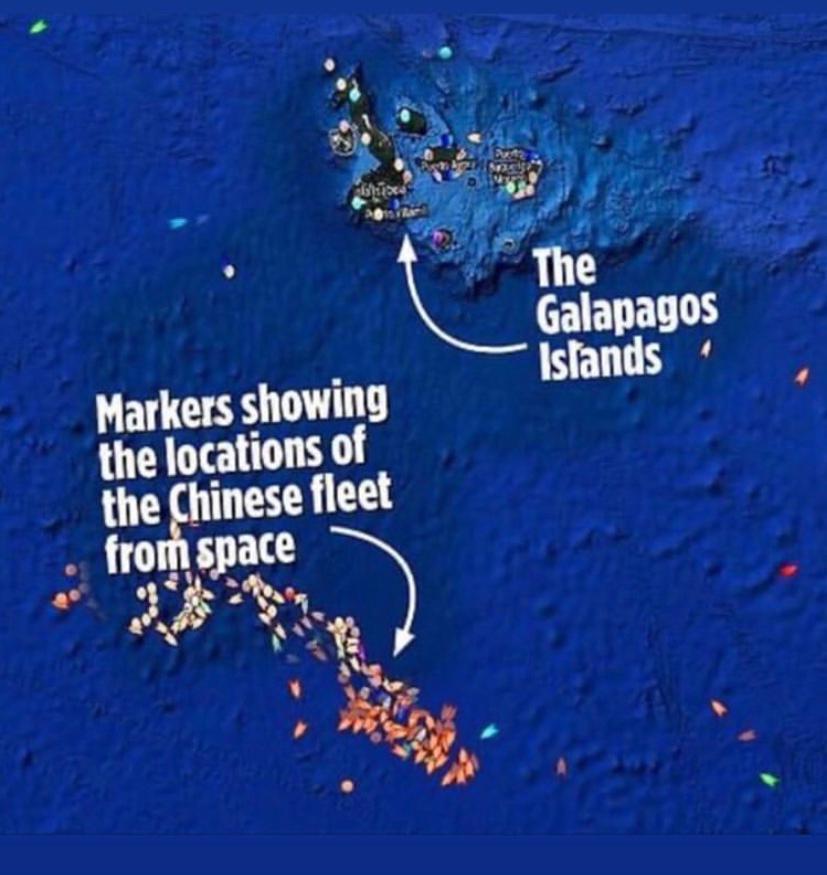Concerning News As An Estimated 250 Chinese Fishing Vessels Found Near The Galápagos Islands; Killing Protected Species, As Well As Sharks For Their Fins
Photo Jax Oliver, Sea Shepherd
On July 17th, the British Broadcasting Corporation (BBC) reported an unusual concentration of Chinese-flagged fishing vessels congregating in the high seas of the Eastern Tropical Pacific, a maritime region that includes the Galapagos Marine Reserve. The Galapagos Marine Reserve is a UNESCO World Heritage Site and is home to the largest concentration of sharks in the world.
“One of the great challenges of fighting illegal, unreported, and unregulated fishing is the difficulty of enforcement in the high seas, an area of water covering 2/3rds of the ocean’s surface. The high seas are beyond the national jurisdiction of any country other than the flag State of the fishing vessels in question, thus it is up to China to reign in vessels that are Chinese-registered,” said Captain Peter Hammarstedt with Sea Shepherd Conservation Society in a statement sent to WAN. “If they were caught actually fishing in the water of the Galapagos Marine Reserve then they could be arrested by the Ecuadorian Navy as they would be in the sovereign waters of Ecuador. That is why we need a new UN treaty that properly protects the high seas, including vast marine protected areas (MPAs). Marine scientists argue that at least 30% of the oceans should be locked up into MPAs. To date, less than 3% are.”
“The presence of these fishing vessels in a high seas pocket between the Galapagos Marine Reserve and Ecuador’s sovereign waters is not technically illegal, but it does violate the spirit of the marine protected area since many of the species, including sharks, are migratory and regularly leave the sanctuary for the high seas. Once in the high seas, they have fewer protections than under the Ecuadorian laws governing the Galapagos Marine Reserve,” continued Captain Hammarstedt.

The fleet was detected using data gathered by Global Fishing Watch, an ocean conservation group that employs satellites and other technological solutions to monitor fishing activity. Sea Shepherd has been working with Global Fishing Watch since 2018, investigating incidents of illegal, unreported, and unregulated (IUU) fishing in the high seas of the Eastern Tropical Pacific as part of Operation Treasured Islands. The Eastern Tropical Pacific is one of the world’s most critical areas of marine biodiversity, and an area where sharks have less protection because the waters do not belong to any state.
These monitoring missions have included the observation of a Chinese-flagged vessel, the Fu Yuan Yu 019, retrieving a longline teeming with silky sharks, a species with heightened protections under the Convention on the International Trade in Endangered Species of Fauna and Flora (CITES) because of its near-threatened status.
While presently limited due to the logistical challenges posed by COVID-19, Sea Shepherd is dedicated to continued vessel operations in the Eastern Tropical Pacific – working with authorities to stop illegal fishing where governments have national jurisdiction, and monitoring high seas areas where there is a law enforcement vacuum.
You can help all animals and our planet by choosing compassion on your plate and in your glass. #GoVeg